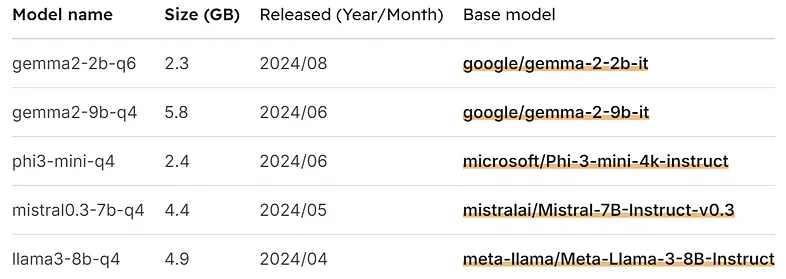Python BeautifulSoup 实战案例:抓取网页并提取数据
在数据分析和机器学习领域中,数据是不可或缺的资源。网页数据作为丰富的信息来源,往往需要通过爬虫抓取。Python 的 BeautifulSoup 是处理 HTML 和 XML 的利器,它能够将复杂的网页文档解析为可操作的数据结构,让我们能够轻松提取和处理信息。
本篇文章将详细介绍 BeautifulSoup 的基本用法,并通过一个实际案例演示如何使用 BeautifulSoup 抓取和解析网页数据,帮助新手理解并掌握这项技能。

一、BeautifulSoup 简介
BeautifulSoup 是一个用于解析 HTML 和 XML 的 Python 库。它支持多种解析器,默认使用的是 html.parser,此外还可以使用 lxml 和 html5lib。BeautifulSoup 可以通过标签、属性、文本等多种方式灵活地提取网页内容。
1. BeautifulSoup 的特点
- 简洁易用:代码直观,适合解析结构复杂的 HTML 页面。
- 解析器选择灵活:支持多种解析器,应对不同的 HTML 结构。
- 兼容性强:能够处理格式不规范的网页。
2. 安装 BeautifulSoup
可以使用以下命令安装 BeautifulSoup 和 lxml 解析器:
pip install beautifulsoup4 lxml
安装完成后,我们就可以开始学习 BeautifulSoup 的基本用法和实际案例了。
二、BeautifulSoup 的基本用法
在使用 BeautifulSoup 抓取网页数据之前,我们先了解一些常用的基本操作,例如创建 BeautifulSoup 对象、选择元素和提取数据。
1. 创建 BeautifulSoup 对象
我们首先需要从网页中获取 HTML 内容,一般通过 requests 库来完成。以下是一个简单的示例:
python">import requests
from bs4 import BeautifulSoup# 获取网页内容
url = 'https://example.com'
response = requests.get(url)
html_content = response.content# 创建 BeautifulSoup 对象
soup = BeautifulSoup(html_content, 'html.parser')
2. 查找元素
BeautifulSoup 提供了多种查找元素的方法,例如 find、find_all、select 等。以下是几种常用的查找方式:
find:查找第一个符合条件的元素find_all:查找所有符合条件的元素select:使用 CSS 选择器查找元素
python"># 查找第一个 h1 元素
h1_tag = soup.find('h1')
print(h1_tag.text)# 查找所有的链接
links = soup.find_all('a')
for link in links:print(link.get('href'))# 使用 CSS 选择器查找元素
items = soup.select('.item .title')
for item in items:print(item.text)
3. 提取元素内容
我们可以使用 text、get_text() 或者 attrs 等方法提取元素的文本内容和属性值:
python"># 提取标签文本
title = soup.find('h1').text# 提取属性
link = soup.find('a')
href = link.get('href') # 或者 link['href']
三、BeautifulSoup 实战案例:抓取并提取新闻标题
为了更好地理解 BeautifulSoup 的应用,我们来做一个简单的实战案例:从新闻网站上抓取新闻标题和链接,并保存到本地文件中。我们以 BBC News 网站为例。
1. 需求分析
在本案例中,我们的目标是抓取 BBC News 网站首页的新闻标题和链接,并将它们保存到一个 CSV 文件中。我们需要做以下几件事:
- 获取网页的 HTML 内容。
- 使用 BeautifulSoup 解析 HTML,提取新闻标题和链接。
- 将数据保存到 CSV 文件中。
2. 案例实现步骤
Step 1: 获取网页 HTML 内容
我们使用 requests 库发送请求来获取 HTML 内容。
python">import requests# 目标网址
url = 'https://www.bbc.com/news'# 发送请求
response = requests.get(url)# 检查请求状态
if response.status_code == 200:html_content = response.content
else:print("Failed to retrieve the webpage")
Step 2: 解析并提取新闻标题和链接
获取 HTML 内容后,我们使用 BeautifulSoup 解析网页,并通过特定的 CSS 类选择新闻标题和链接。我们可以在浏览器中检查网页元素,找到包含新闻标题的元素类名。
python">from bs4 import BeautifulSoup# 解析 HTML 内容
soup = BeautifulSoup(html_content, 'html.parser')# 查找新闻标题和链接
news_list = []
for item in soup.select('.gs-c-promo-heading'):title = item.get_text()link = item.get('href')if link and not link.startswith('http'):link = 'https://www.bbc.com' + link # 补全相对链接news_list.append([title, link])
在这里,我们使用了 select 方法,定位 .gs-c-promo-heading 类来找到每条新闻的标题和链接。
Step 3: 将数据保存到 CSV 文件
我们可以使用 Python 的 csv 模块将提取的数据保存到 CSV 文件中:
python">import csv# 写入数据到 CSV 文件
with open('bbc_news.csv', 'w', newline='', encoding='utf-8') as csvfile:writer = csv.writer(csvfile)writer.writerow(['Title', 'Link'])writer.writerows(news_list)print("Data saved to bbc_news.csv")
到这里,我们已经完成了从 BBC News 抓取新闻标题和链接的全过程。运行程序后,你会在当前目录下找到一个名为 bbc_news.csv 的文件,其中包含抓取到的新闻数据。
四、进一步优化
我们的实战案例已基本完成,但实际应用中还可以做进一步优化。例如:
1. 处理错误
网页抓取过程中,可能会遇到网络请求错误或者网页结构变化等情况。我们可以通过增加异常处理来提升代码的稳定性。
python">try:response = requests.get(url)response.raise_for_status()
except requests.exceptions.RequestException as e:print(f"Error: {e}")
2. 避免频繁请求
为了避免被网站封禁,我们可以在每次请求之间增加延时。使用 time.sleep() 可以让爬虫看起来更像正常用户的行为:
python">import time
time.sleep(1) # 延时 1 秒
3. 使用多线程或异步请求
在抓取大量数据时,可以使用多线程或异步请求来加快爬取速度。Python 的 concurrent.futures 或 aiohttp 是不错的选择。
五、完整代码示例
以下是完整的代码示例,将之前的步骤合并到一起:
python">import requests
from bs4 import BeautifulSoup
import csv
import timedef fetch_news(url):try:response = requests.get(url)response.raise_for_status()return response.contentexcept requests.exceptions.RequestException as e:print(f"Error: {e}")return Nonedef parse_news(html_content):soup = BeautifulSoup(html_content, 'html.parser')news_list = []for item in soup.select('.gs-c-promo-heading'):title = item.get_text()link = item.get('href')if link and not link.startswith('http'):link = 'https://www.bbc.com' + linknews_list.append([title, link])return news_listdef save_to_csv(news_list, filename='bbc_news.csv'):with open(filename, 'w', newline='', encoding='utf-8') as csvfile:writer = csv.writer(csvfile)writer.writerow(['Title', 'Link'])writer.writerows(news_list)print(f"Data saved to {filename}")def main():url = 'https://www.bbc.com/news'html_content = fetch_news(url)if html_content:news_list = parse_news(html_content)save_to_csv(news_list)time.sleep(1)if __name__ == "__main__":main()
六、总结
通过本篇文章的案例,我们深入了解了如何使用 BeautifulSoup 抓取和解析网页内容。步骤涵盖了网页请求、数据解析以及 CSV 文件存储的全过程。BeautifulSoup 的强大之处在于它的灵活性,能够应对不同的网页结构。配合 requests 库,BeautifulSoup 可以帮助我们轻松实现数据抓取任务。在实际应用中,通过加入错误处理、延时等优化措施,可以让爬虫更加稳定可靠。



